
Revelers from the Imperatriz samba school parade on the first night of Carnival in Rio de Janeiro's Sambadrome on February 19, 2012. (Ricardo Moraes/Reuters

A performer from the Beija Flor samba school parades during Carnival celebrations at the Sambadrome in Rio de Janeiro on Feb. 20, 2012. Millions watched the sequin-clad samba dancers at Rio de Janeiro's iconic Carnival parade. (Silvia Izquierdo/Associated Press)

Parade goers reach out for beads at the Krewe of Chaos Parade in New Orleans on February 16, 2012. (Chris Granger/The Times-Picayune/Associated Press)

People dressed for Carnival pause at the start of carnival in Lucerne early on February 16, 2012. The history of Lucerne's carnival can be traced back over more than 600 years. (Michael Buholzer/Reuters)

Fireworks explode during Mazatlan’s "The Fair of Empires" on February 18, 2012. (Stringer/Reuters

A reveler from the Unidos da Tijuca samba school takes part in the second night of Carnival in Rio de Janeiro's Sambadrome on February 21, 2012. (Nacho Doce/Reuters
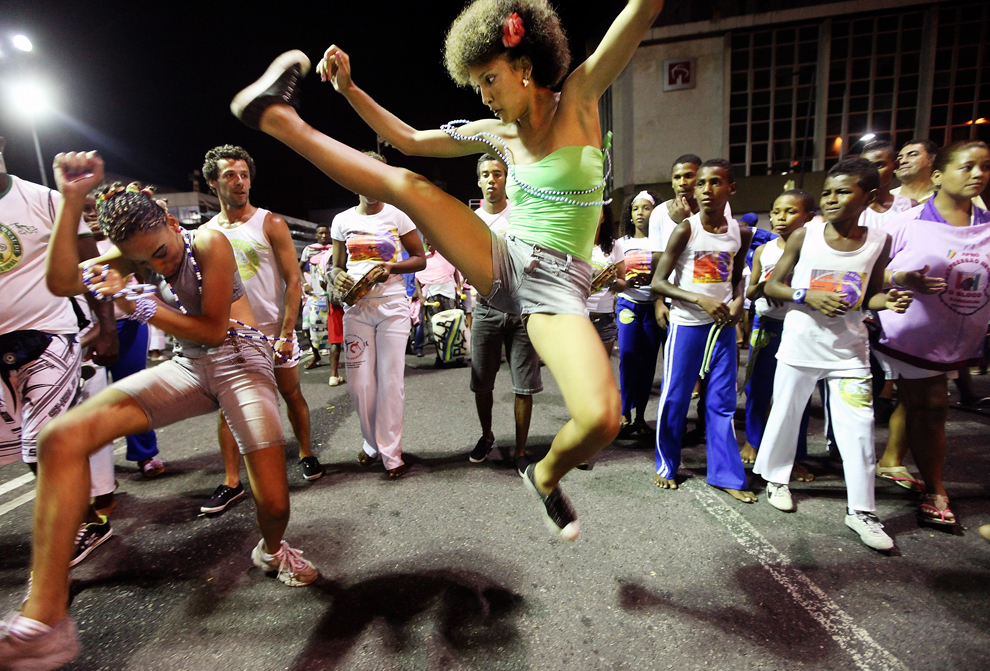
Brazilians perform capoeira on the first day of Carnival celebrations on February 16, 2012 in Salvador, Brazil. Capoeira is a Brazilian martial art and dance form that was developed by slaves in the region. (Mario Tama/Getty Images

Dancers of Sao Clemente samba school parade on a float during Carnival celebrations at the Sambadrome in Rio de Janeiro on February 20, 2012. (Felipe Dana/Associated Press

Members of the Ilu Oba de Min percussion band wait to perform in Sao Paulo on February 17, 2012. (Nelson Almeida/AFP/Getty Images
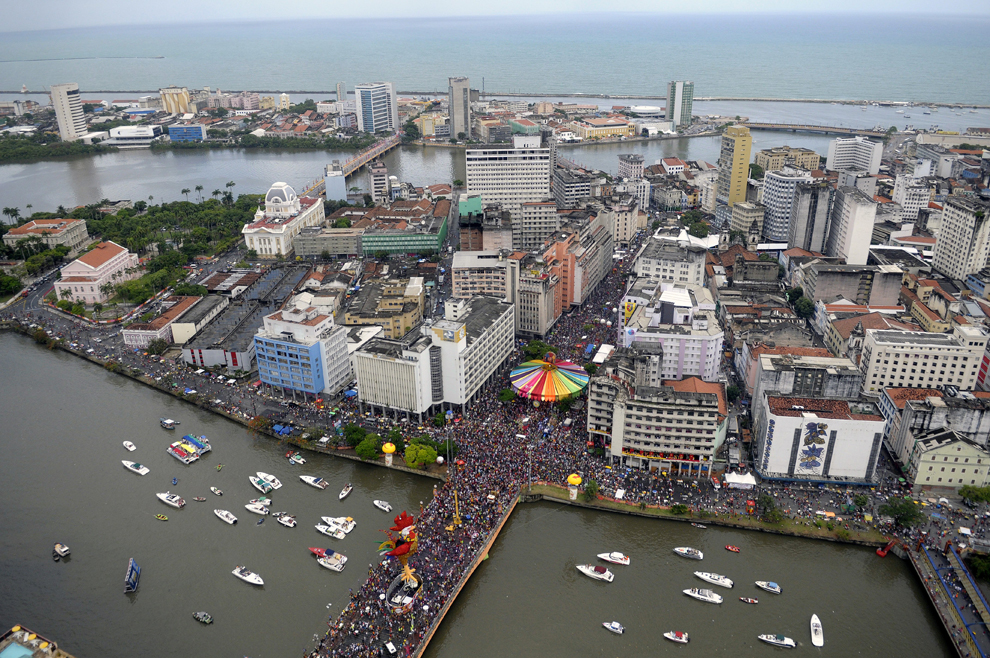
The Galo da Madrugada Carnival parades on February 18, 2012 in Recife, Brazil. (Leo Caldas/AFP/Getty Images

Revelers hold hands as they fall back into the mud during the "Bloco da Lama," or "Mud Block" carnival parade in Parati, Brazil on February 18, 2012. (Felipe Dana/Associated Press
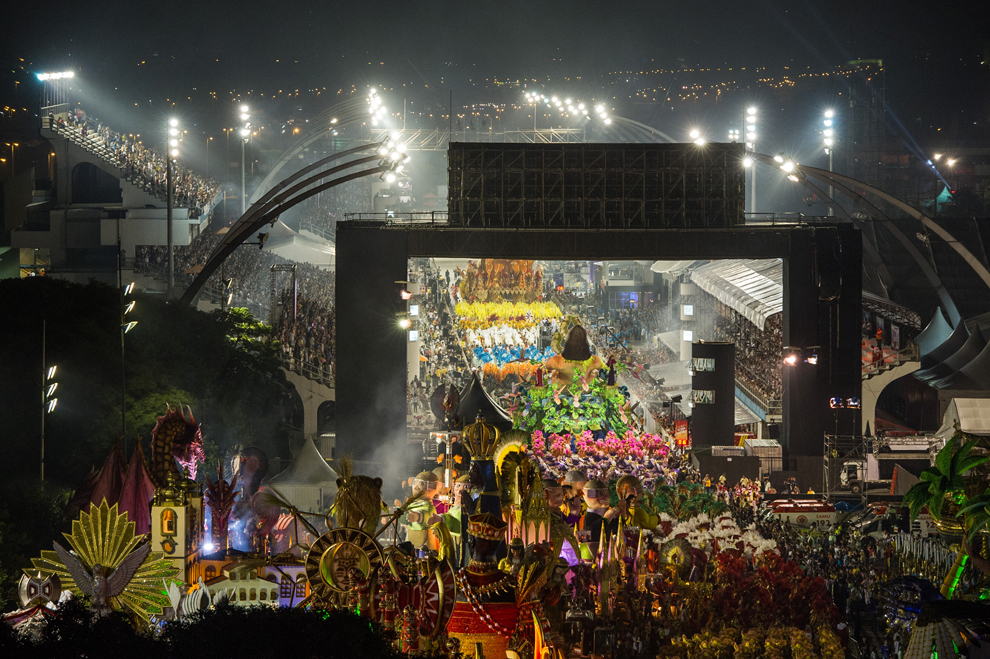
Revellers of the Dragoes da Real samba school parade during the second night of Carnival in Sao Paulo on February 18, 2012. (Yasuyoshi Chiba/AFP/Getty Images
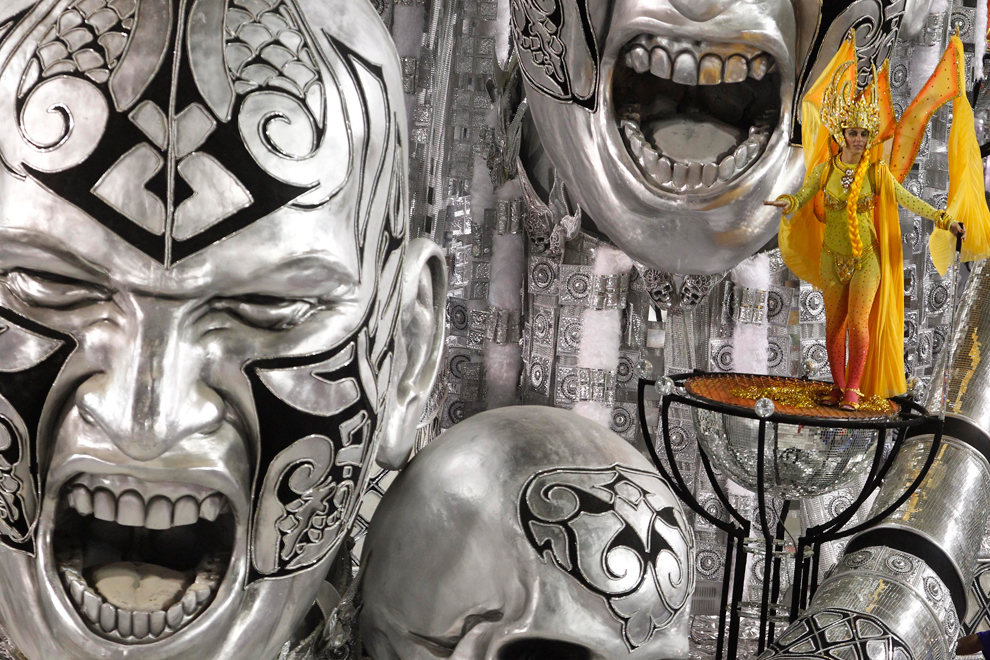
A dancer of the Uniao da Ilha samba school parades on a float during Carnival at the Sambadrome in Rio de Janeiro on February 20, 2012. (Felipe Dana/Associated Press
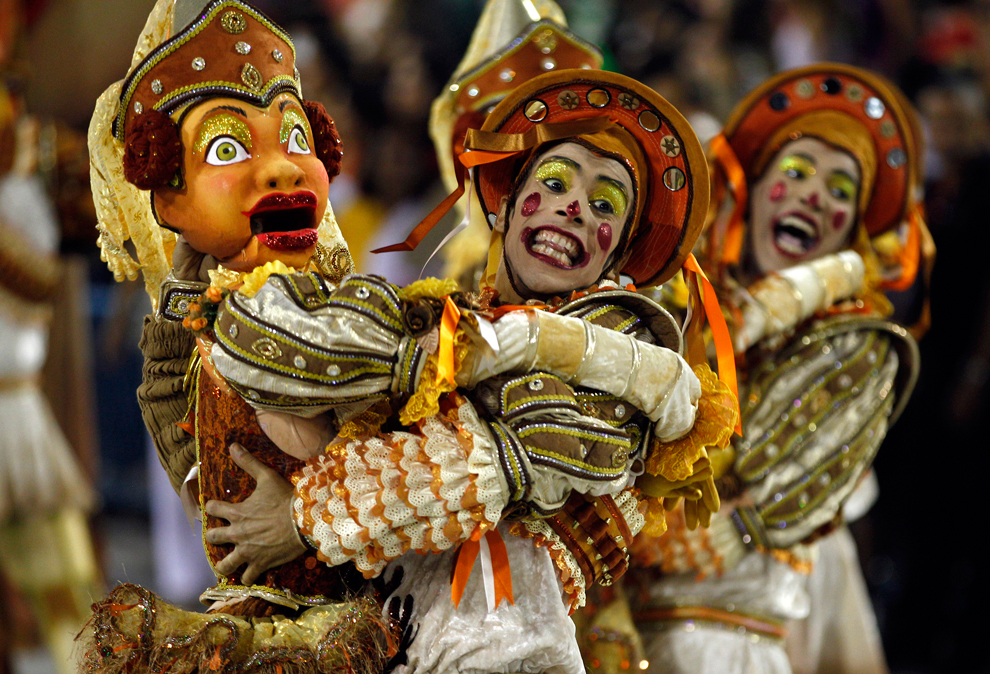
Performers from the Salgueiro samba school parade during Carnival at the Sambadrome in Rio de Janeiro on February 21, 2012. (Victor R. Caivano/Associated Press)
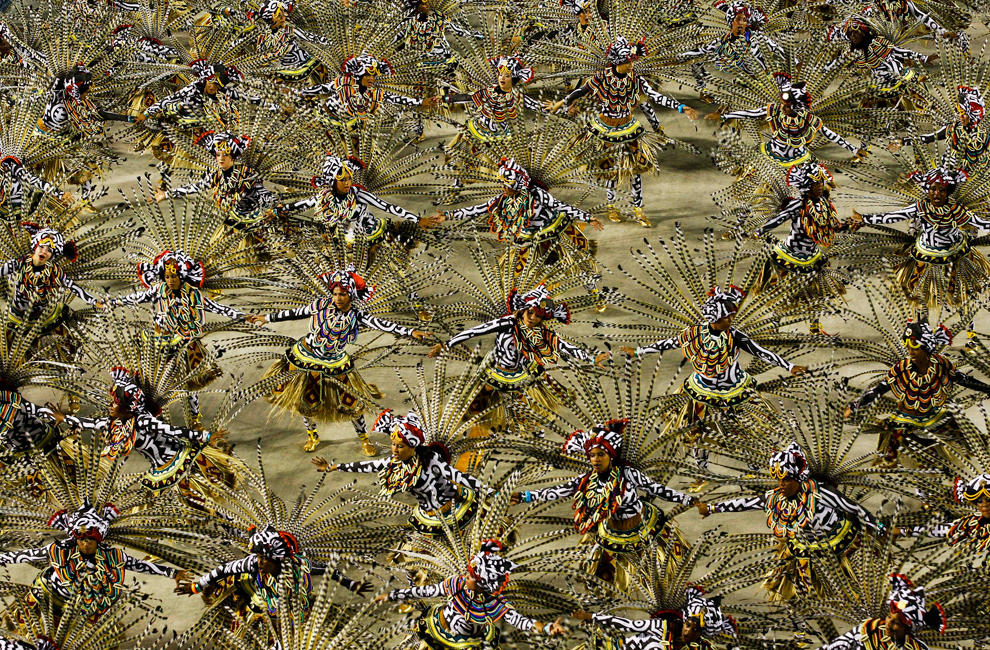
The Grande Rio samba school parades during Carnival at the Sambadrome in Rio de Janeiro on February 21, 2012. (Victor R. Caivano/Associated Press

A transvestite dances during the gay and lesbian ball at the Jockey Club in Rio de Janeiro on February 21, 2012. (Victor R. Caivano/Associated Press
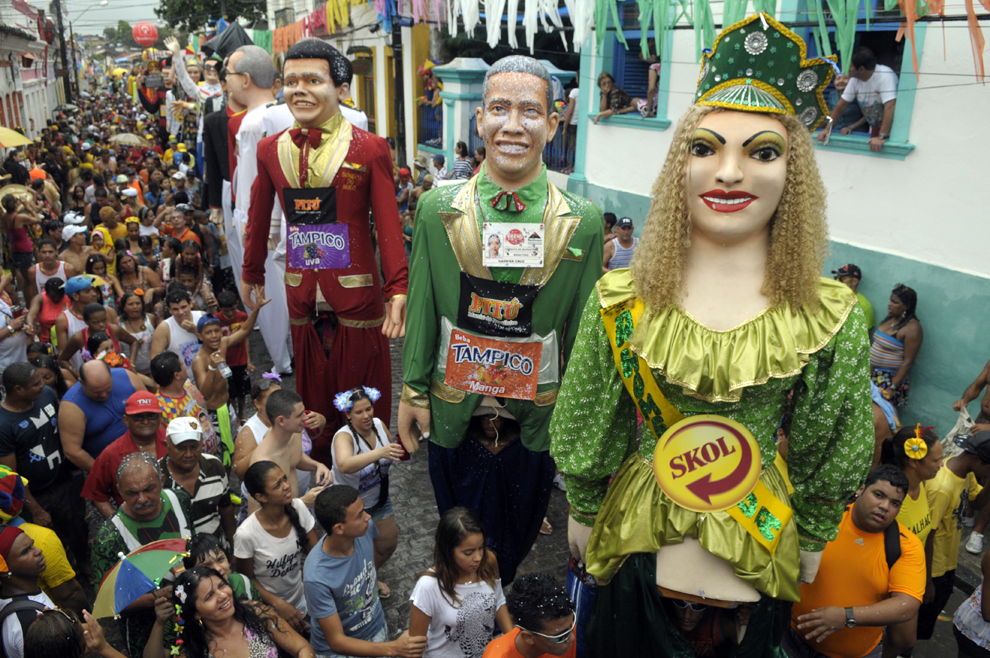
Revelers dance to the sound of Frevo - a traditional musical style of Pernambuco state - during carnival celebrations in Olinda, Brazil on February 21, 2012. (Leo Caldas/AFP/Getty Images
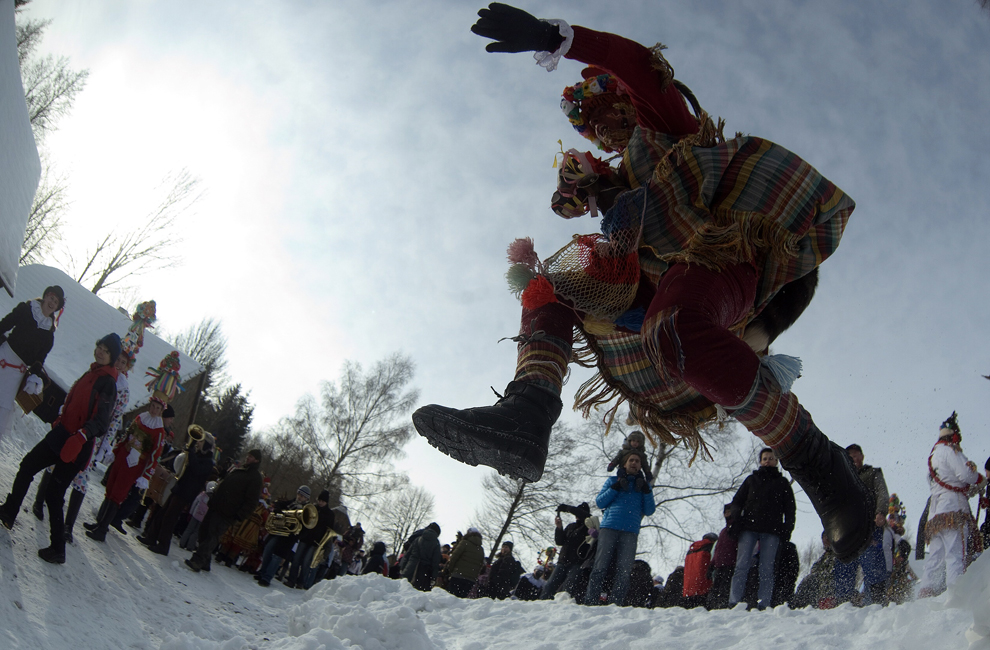
A man dressed in a folk costume jumps during the traditional Czech Masopust Carnival on February 4, 2012, near the east Bohemian city of Pardubice. Every year in mid-winter, villages throughout the Czech Republic celebrate Masopust. The festival marks the beginning of Lent. (Michal Cizek/AFP/Getty Images)
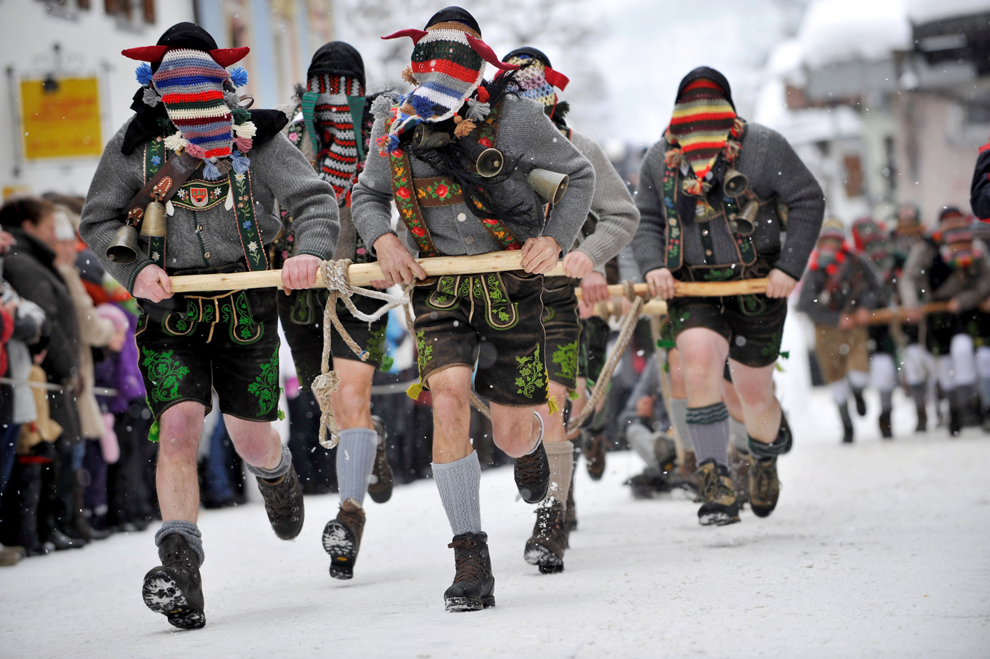
Fools dressed as so-called "Schellenruehrer" (bell shakers) perform on a snowy street of Mittenwald, Germany on February 16, 2012, as the Carnival season began. Hundreds of thousands of Germans, mainly in the western Rhine region, crowd the streets to celebrate Women's Carnival Day, when women traditionally are allowed to cut men's ties. (Frank Leonhardt/AFP/Getty Images)
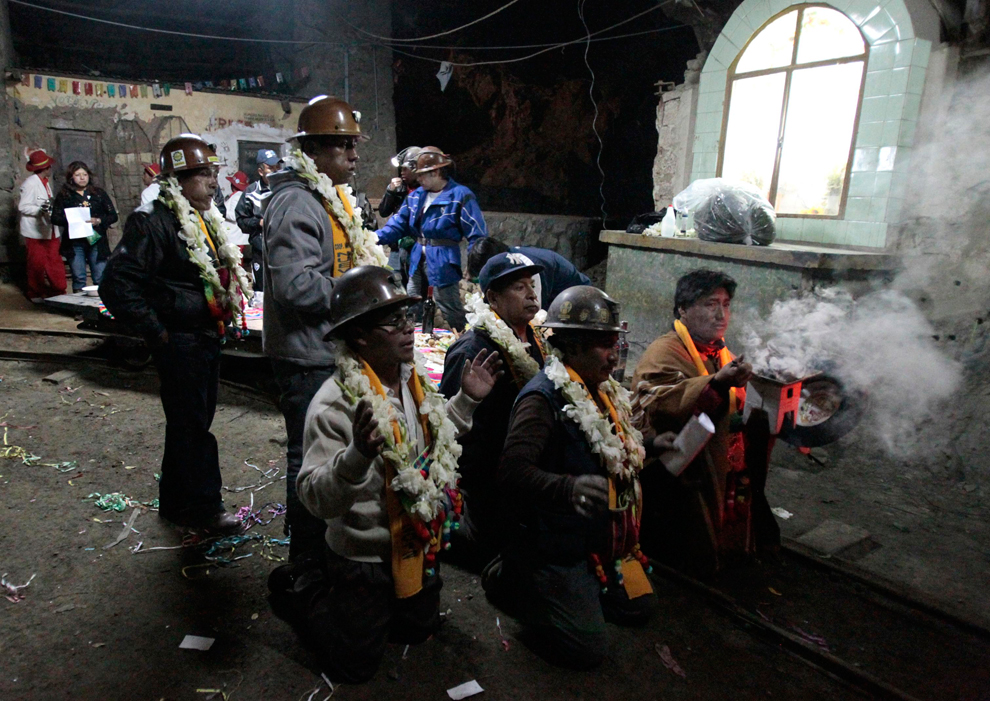
Bolivian mine workers inside the Itos (Nueva San Jose) silver and base metals mine pray to the "Pachamama" (mother earth) during a celebration in the outskirts of Oruro on February 17, 2012. Every year, on the Friday before the Andean Carnival celebrations, miners would sacrifice animals in the mine to bless it, pray for their well-being, and give thanks to Mother Earth. (David Mercado/Reuters
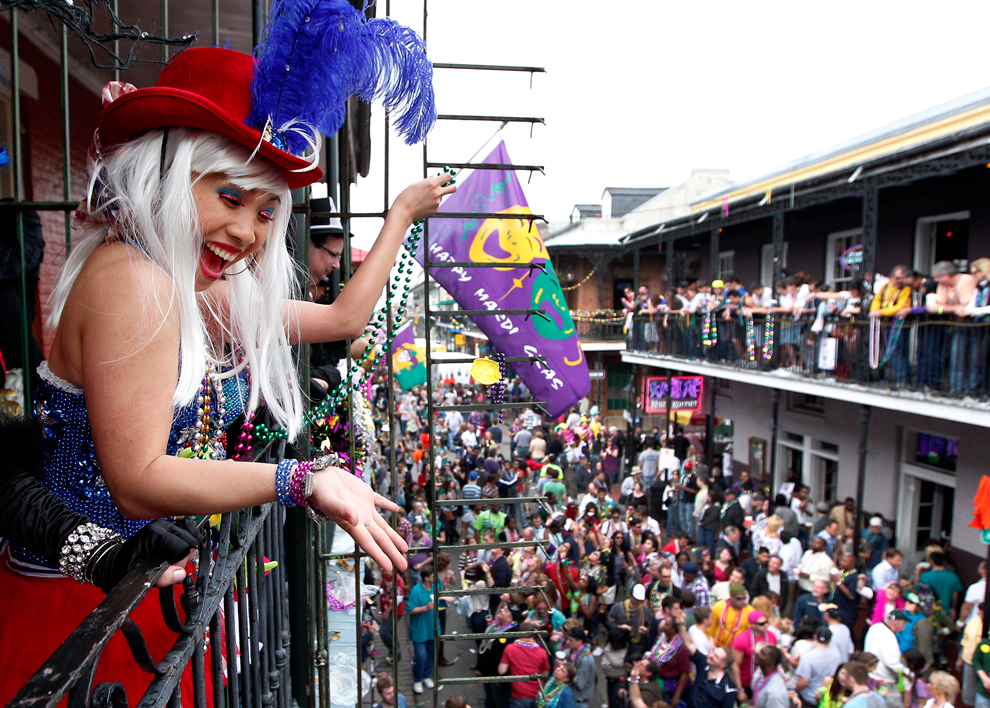
Malia Miyashiro throws beads from a Bourbon St. balcony to Mardi Gras revelers in the French Quarter in New Orleans on February 17, 2012. (Jonathan Bachman/Associated Press

Villagers dressed as Slovakia's Prime Minister Iveta Radicova (right) and Chairman of the Slovak Democratic and Christian Union-Democratic Party Mikulas Dzurinda walk through the village of Lazy pod Makytou on February 18, 2012. Villagers wear masks during the annual Carnival season called "Fasiangy" which takes place from Epiphany through Ash Wednesday. (Radovan Stoklasa/Reuters
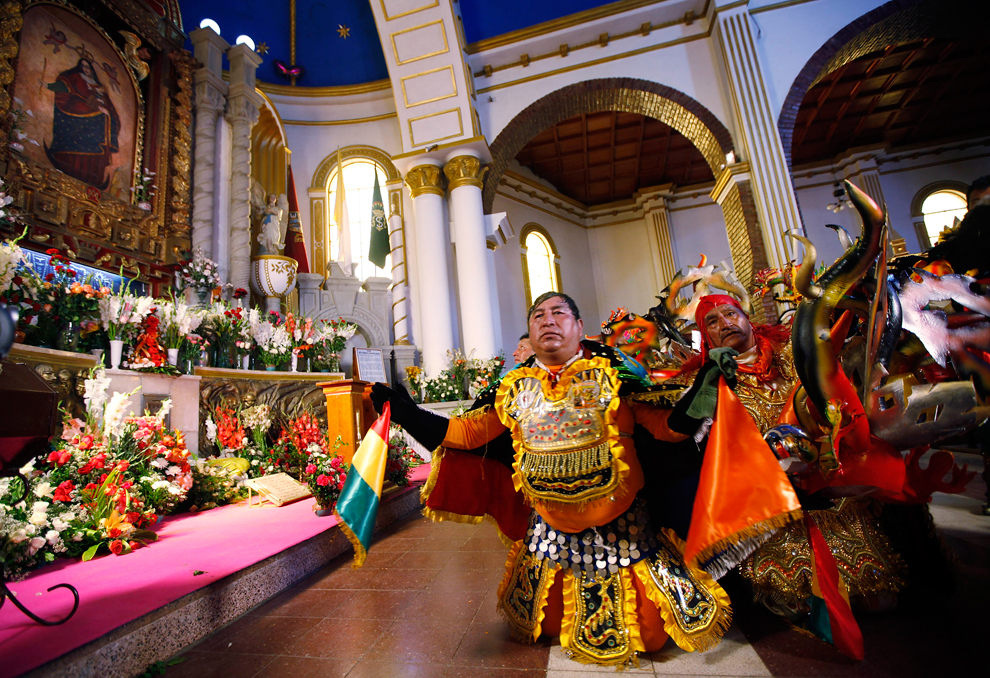
Devil dancers kneel before their patron saint the "Virgen del Socavon" or "Virgin of the Mineshaft" after performing the traditional "Diablada" or "Dance of the Devils" during carnival celebrations in Oruro, Bolivia on February 18, 2012. (Juan Karita/Associated Press)
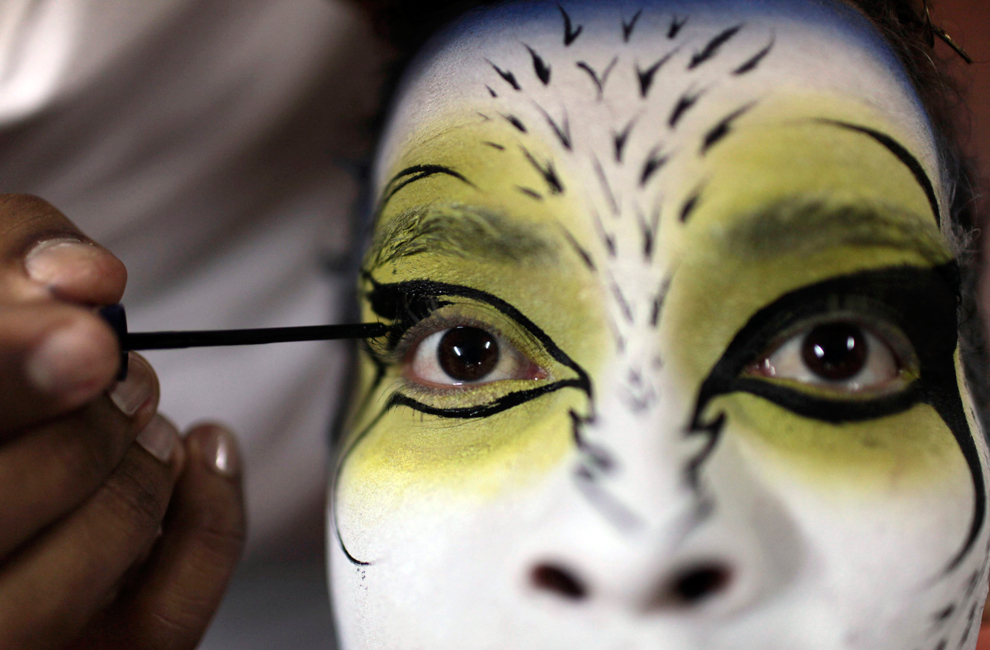
A girl has her face painted during preparations before a parade as part of Carnival in Barranquilla, Colombia on February 18, 2012. (Joaquin Sarmiento/Reuters)
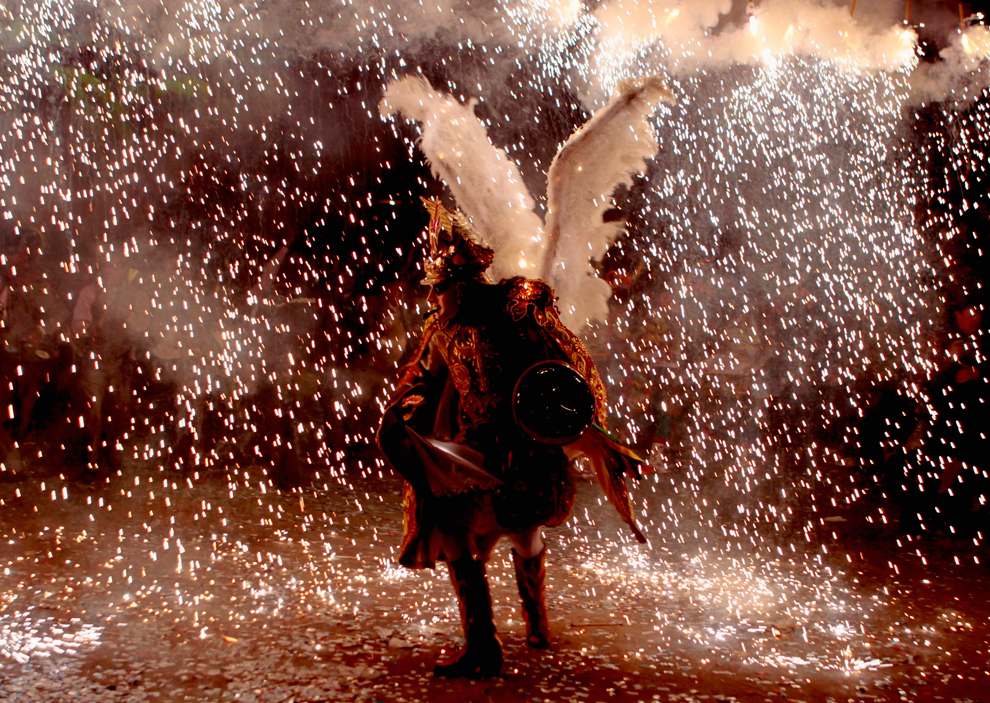
A member of the Diablada Urus group parades during Carnival in Oruro, Bolivia on February 18, 2012. (David Mercado/Reuters
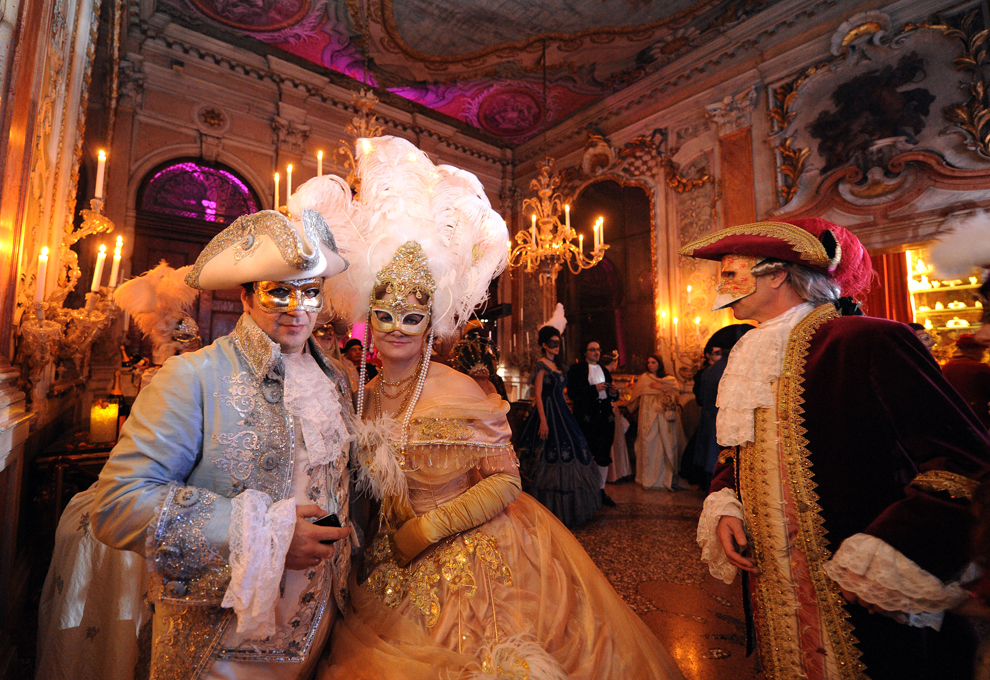
People in costume arrive at the Palazzo Pisani Moretta during the historic "Doge Ball" in Venice on February 18, 2012. (Andrea Pattaro/AFP/Getty Images
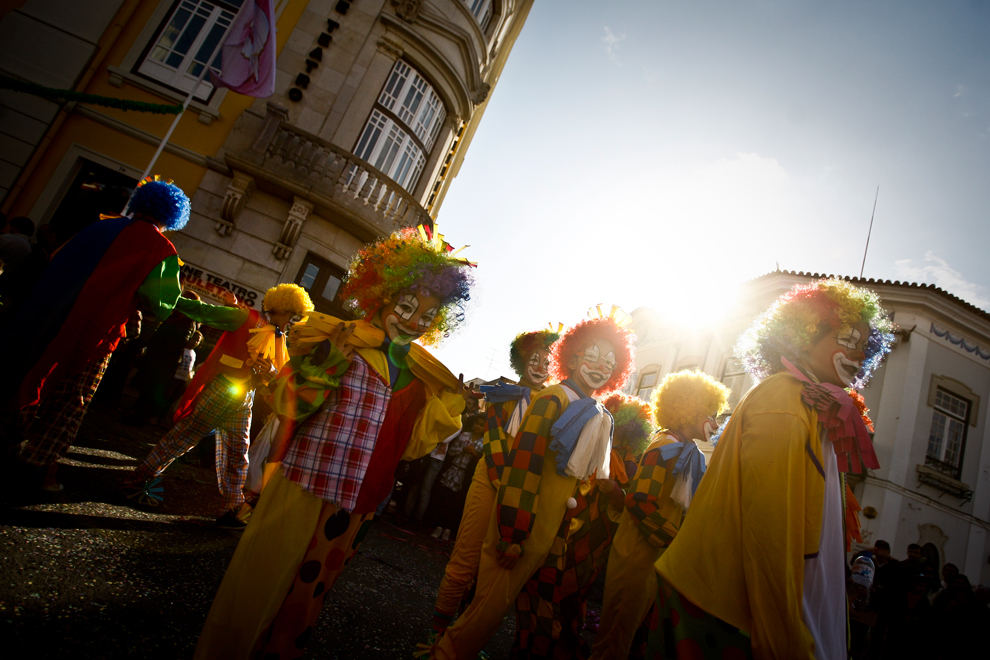
Clowns take part in the parade in Loule, Portugal on February 18, 2012. The Loule Carnival is known in Portugal for the strong political satire of the revealers and their floats. (Patricia De Melo Moreira/AFP/Getty Images
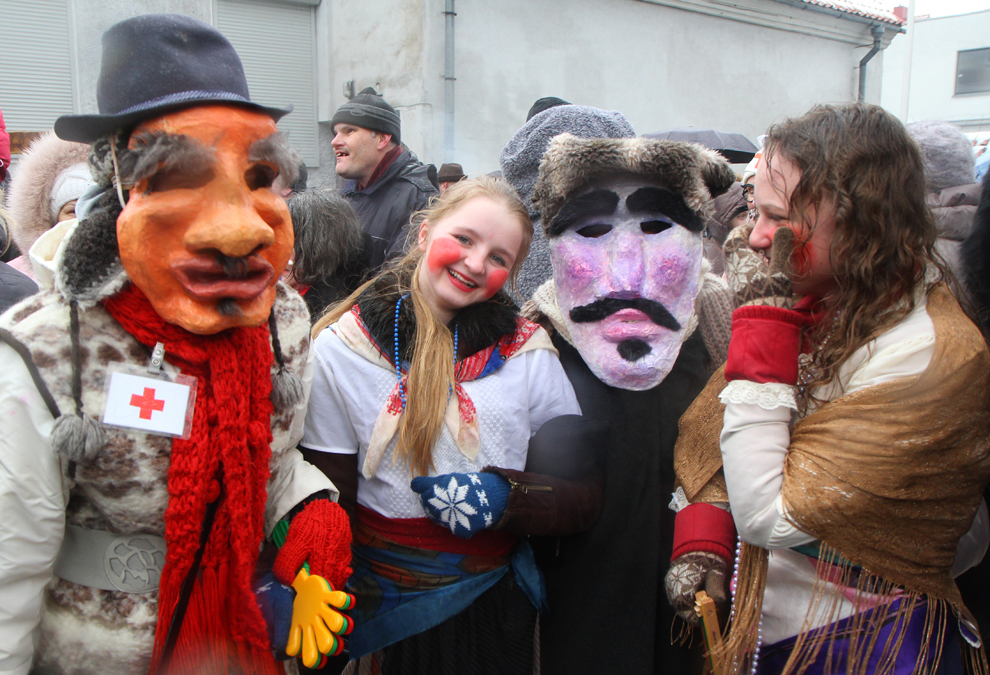
Revellers wearing masks parade in the streets of the old town of Klaipeda, Lithuania on February 19, 2012 during the "Uzgavenes" or "Shrovetide" Carnival to celebrate the coming end of winter, which comes on the seventh week before Easter, and the last days before lent which starts every year on Ash Wednesday. (Peter Malukas/AFP/Getty Images)
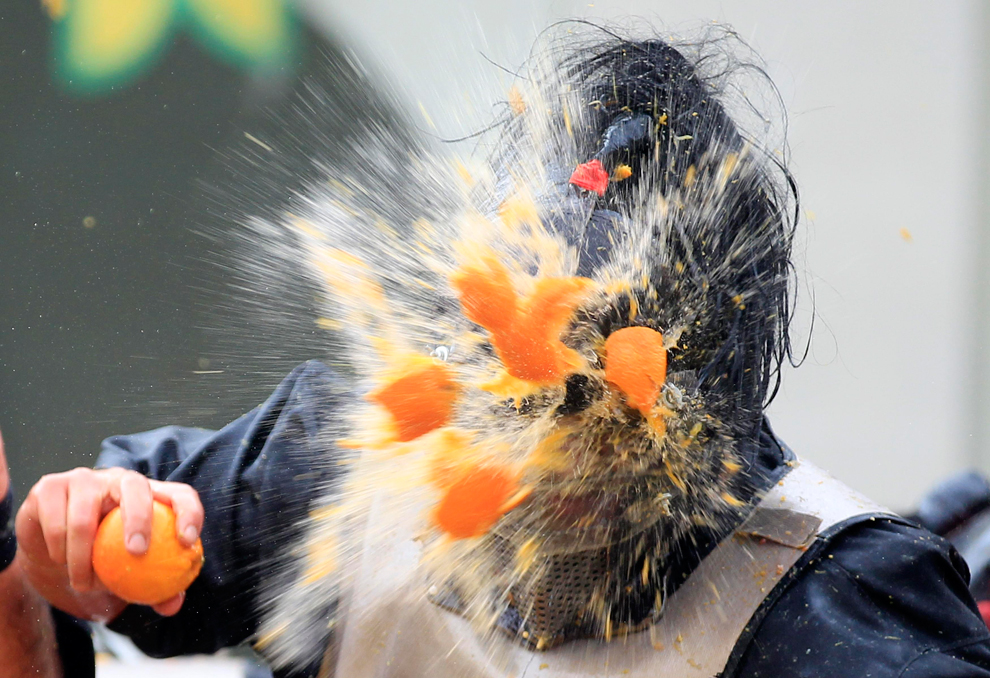
A reveler is hit by an orange during the Carnival battle in Ivrea, Italy on February 19, 2012. Dressed up as Middle Age kings' guards, a group of men ride in a horse-drawn carriage and pelt 'foot soldiers' with oranges as thousands of people gather to re-enact a Middle Age battle when the townsfolk of Ivrea overthrew an evil king. (Stefano Rellandini/Reuters)
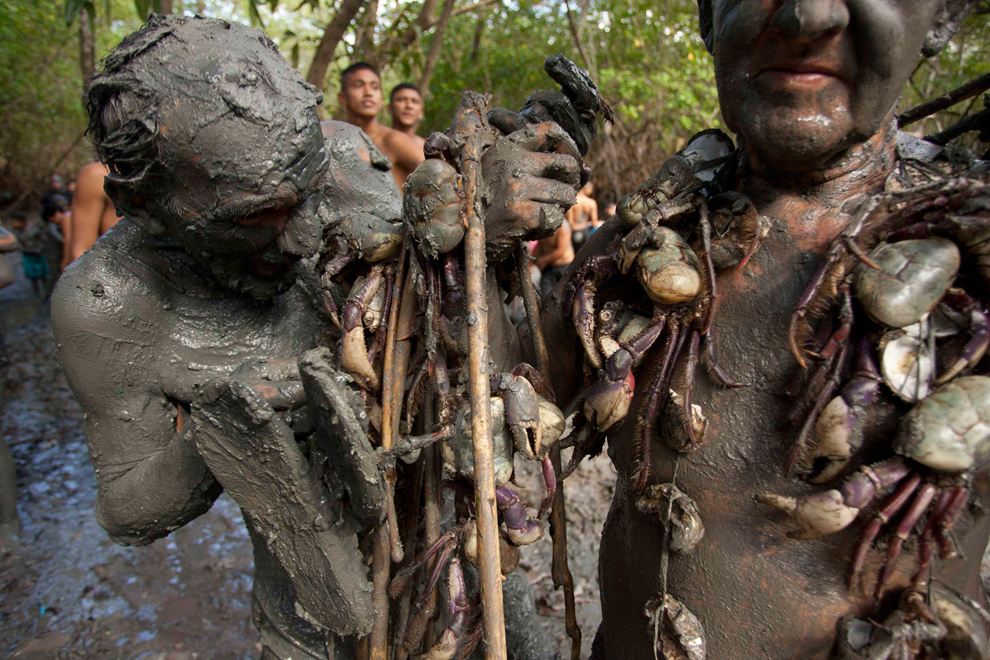
A reveler hangs live crabs from himself while joining others celebrating Carnival by covering themselves with mud from mangrove swamps in Curuca, where the Amazon River pours into the Atlantic, on February 19, 2012. (Paulo Santos/Reuters
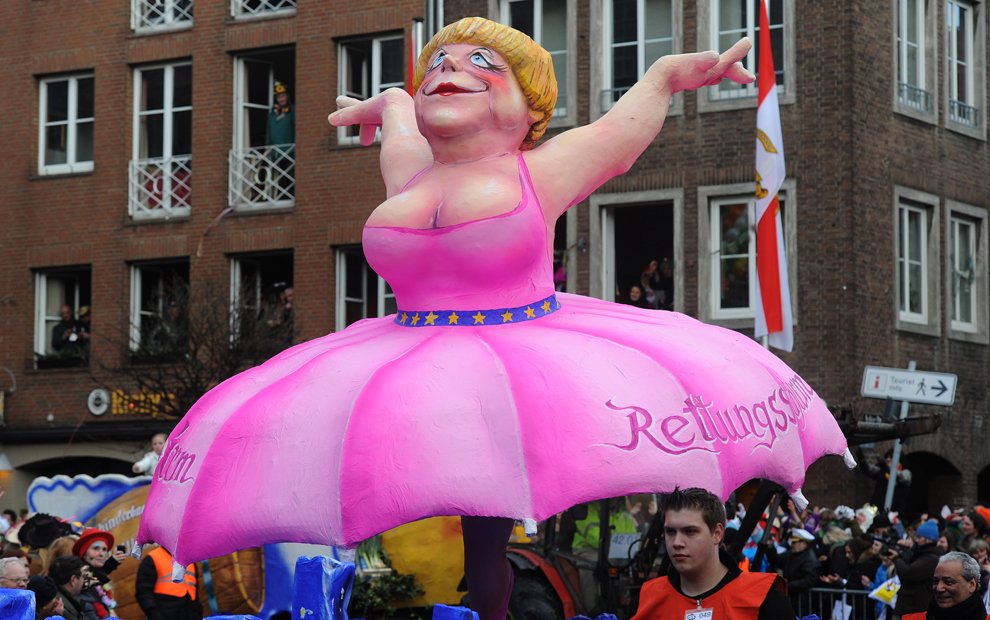
A float featuring Chancellor Angela Merkel makes its way through the streets during the traditional Rose Monday parade on February 20, 2012 in Duesseldorf. (Patrick Stollarz/AFP/Getty Images
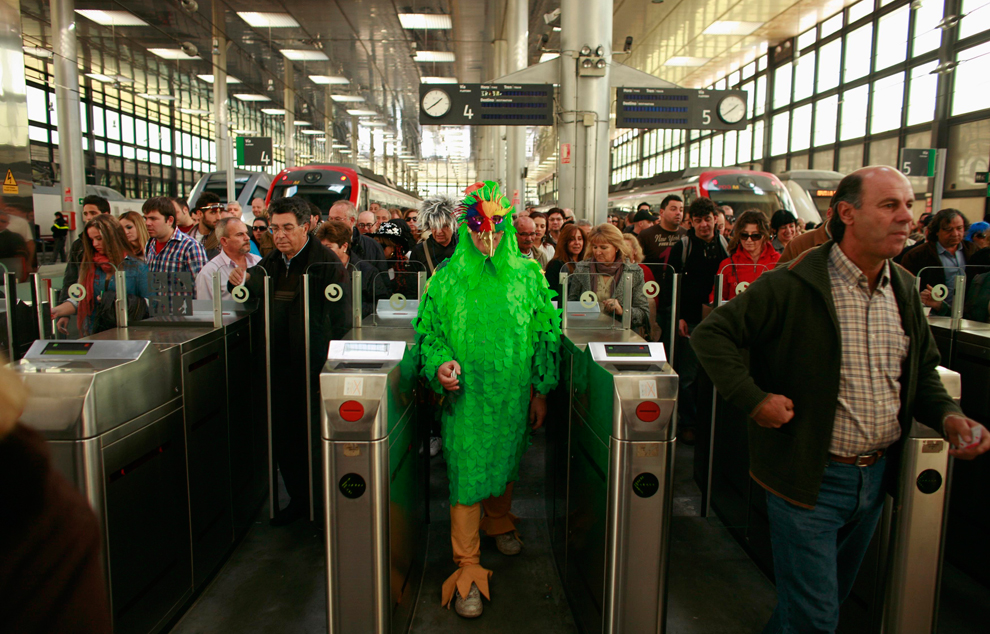
A man in costume passes a ticket control gate in the train station during Carnival in Cadiz, Spain on February 20, 2012. (Marcelo del Pozo/Reuters
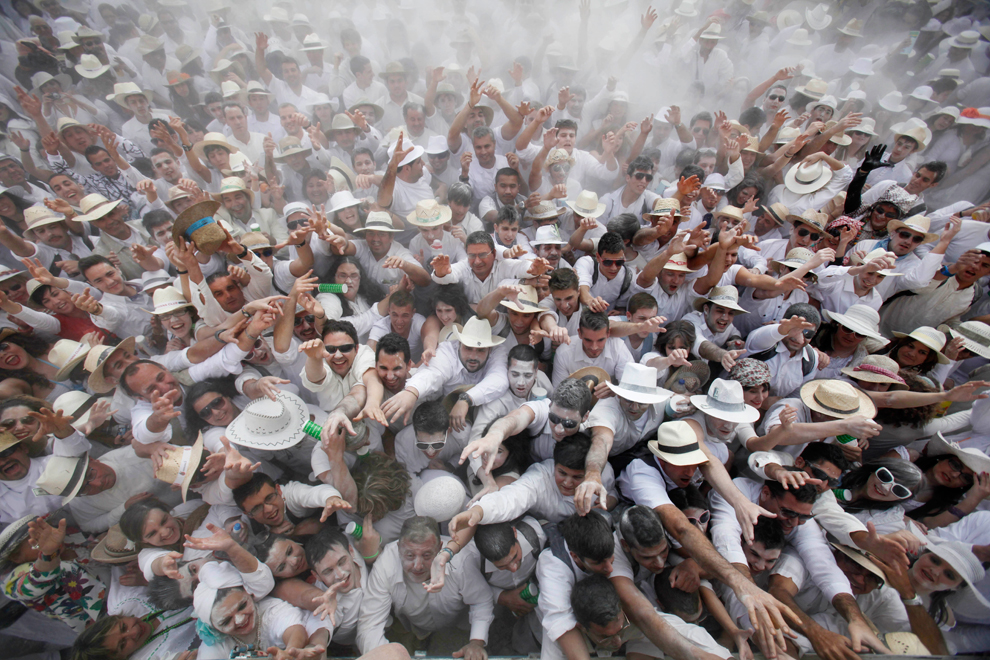
People throw talcum powder at one another as they take part in the "Los Indianos" in Santa Cruz de la Palma, on the Spanish Canary island of Las Palma on February 20, 2012. (Desiree Martin/AFP/Getty Images)

A trader dressed in a carnival costume works at computer screens on the floor of the Frankfurt Stock Exchange during Carnival Tuesday in Frankfurt on February 21, 2012. (Hannelore Foerster/Bloomberg)
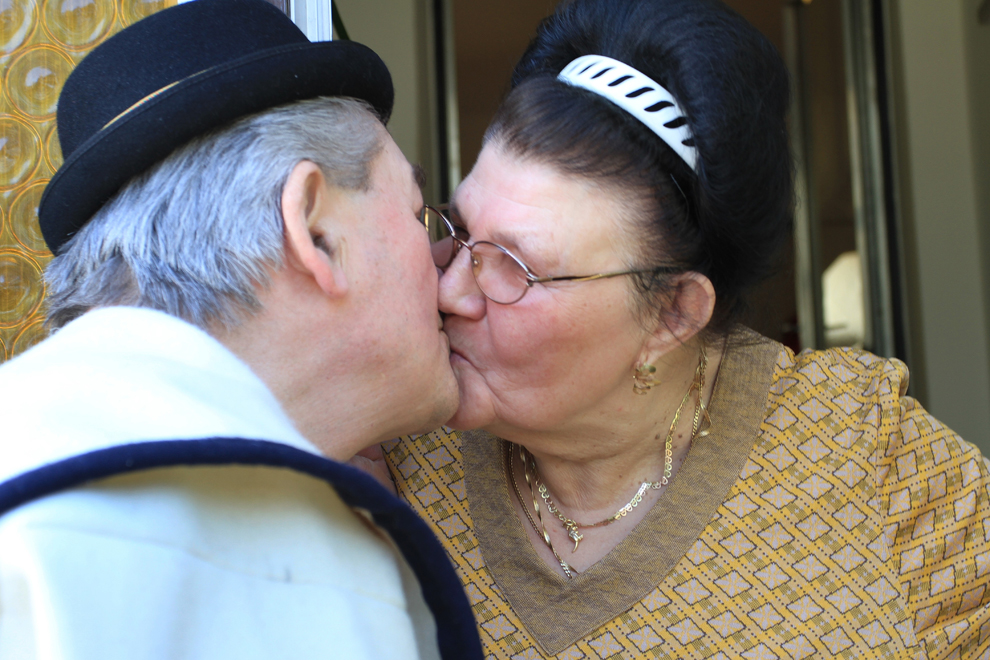
73-year-old Stanislav Popelka kisses his wife on his way to Carnival in the village of Strani, Czech Republic on February 21, 2012. (Radek Mica/AFP/Getty Images
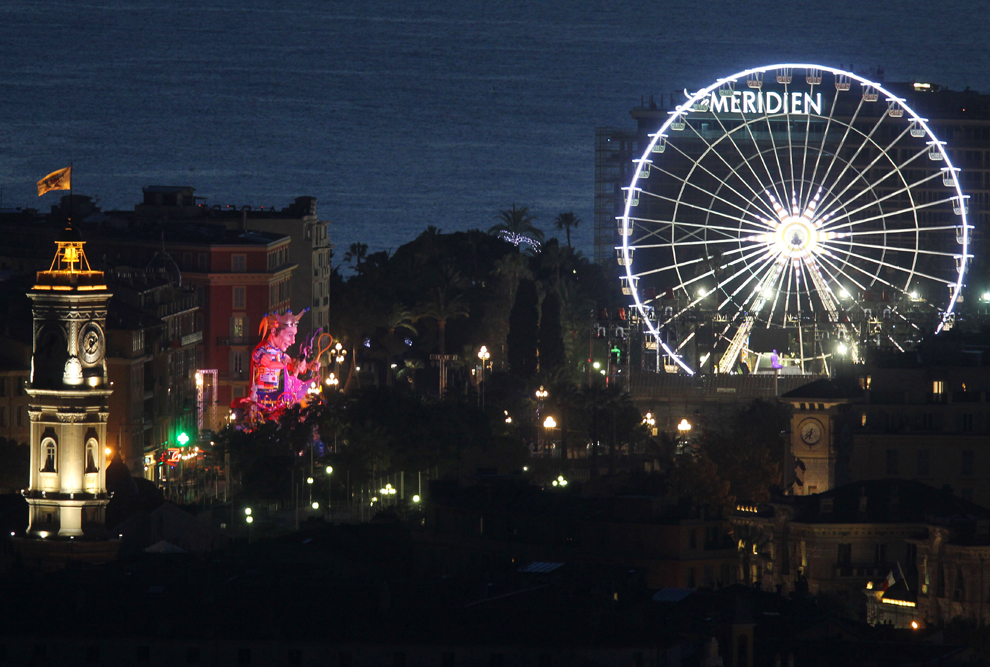
he king's float parades during Carnival on February 21, 2012 in Nice, France. The 128th edition of the Nice's Carnival, celebrating the "King of Sport" with some 20 floats, runs until March 4. (Valery Heche/AFP/Getty Images

A member of Mohacs Busok stands next to a fire in the main square of Mohacs, Hungary on February 21, 2012 during the last day of their 6-day Carnival. The Busojaras is an annual celebration of the Sokci (Croatians) living in the town. (Attila Kisbenedek/AFP/Getty Images

Giant mannequins perform at the Mardi Gras parade in Crested Butte, Colo. on Fat Tuesday, February 21, 2012. (Nathan Bilow/Crested Butte Mountain Resort/Associated Press
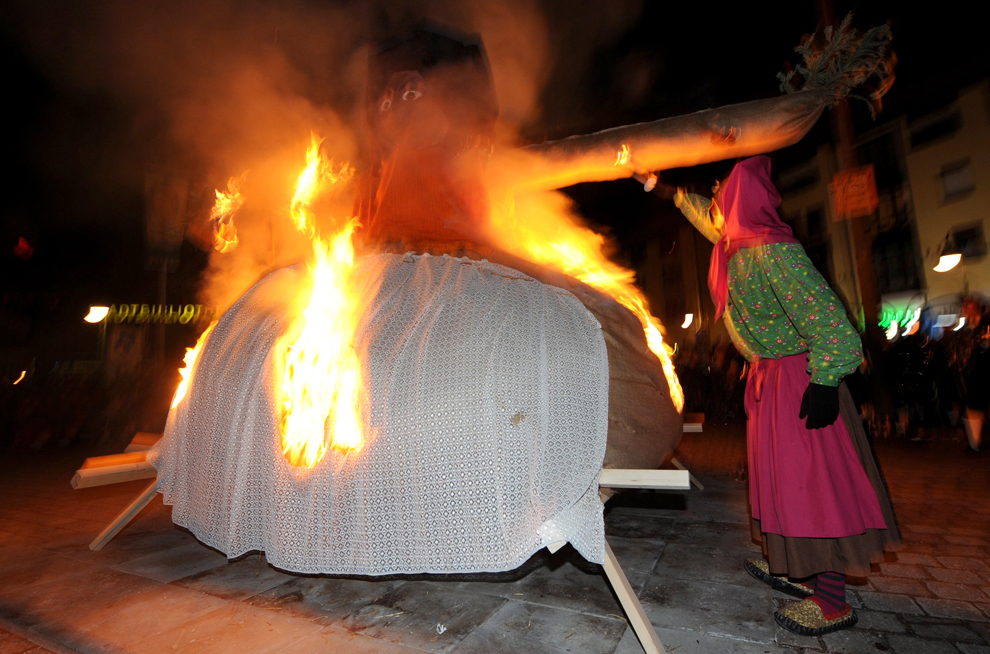
A witch made of straw burns in Villingen-Schwenningen, Germany on February 21, 2012. The custom of burning the witch ended the Swabian-Alemannic Carnival. (Patrick Seeger/AFP/Getty Images
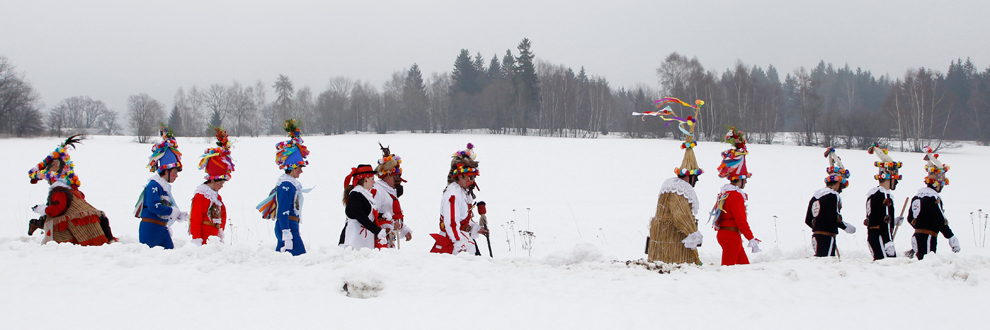
Revelers walk from house to house during Carnival to celebrate the departing winter and forthcoming spring in the village of Vortova, Czech Republic on February 18, 2012. (Petr David Josek/Associated Press
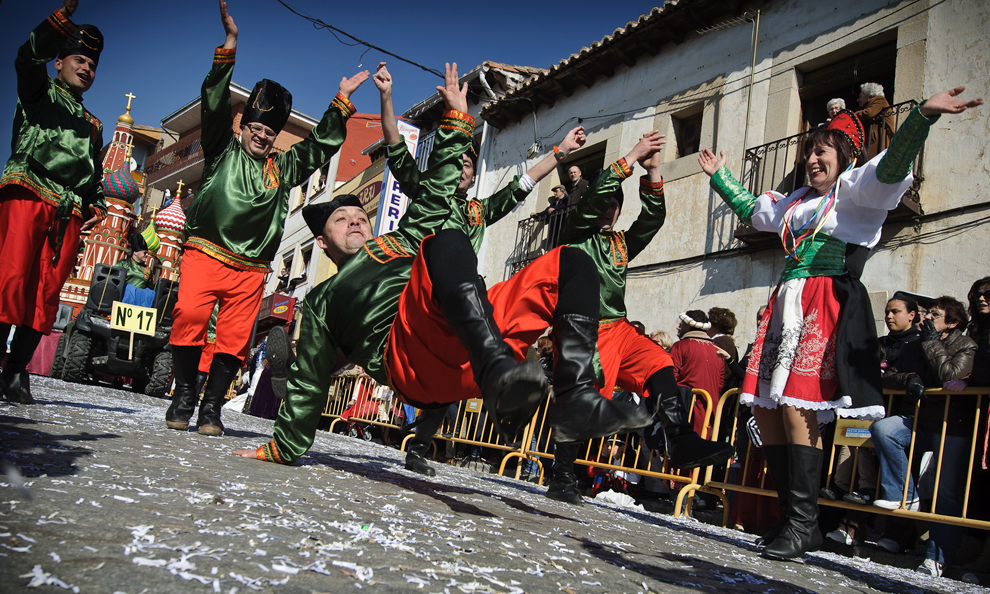
Revelers dressed in Russian costumes dance "Trepak" during Carnival in Cebreros, Spain on February 19, 2012. (Gabriel Bonino
A last blast before the observance of Lent, Carnival has evolved in many parts of the world with Christian traditions to be the biggest party of the year. Traditions vary from country to country, and even from region to region, but most places celebrate with a parade filled with masks, music, and ecstatic revelers. The world's biggest party happens in Rio de Janeiro, where millions fill the streets as the parade enters the Sambadrome. Collected here are pictures of Carnival in many forms as celebrated in various parts of Europe, Latin America, and North America. -- Lane Turner
The Big Picture
Comments